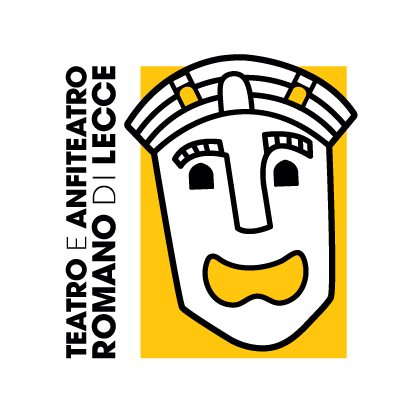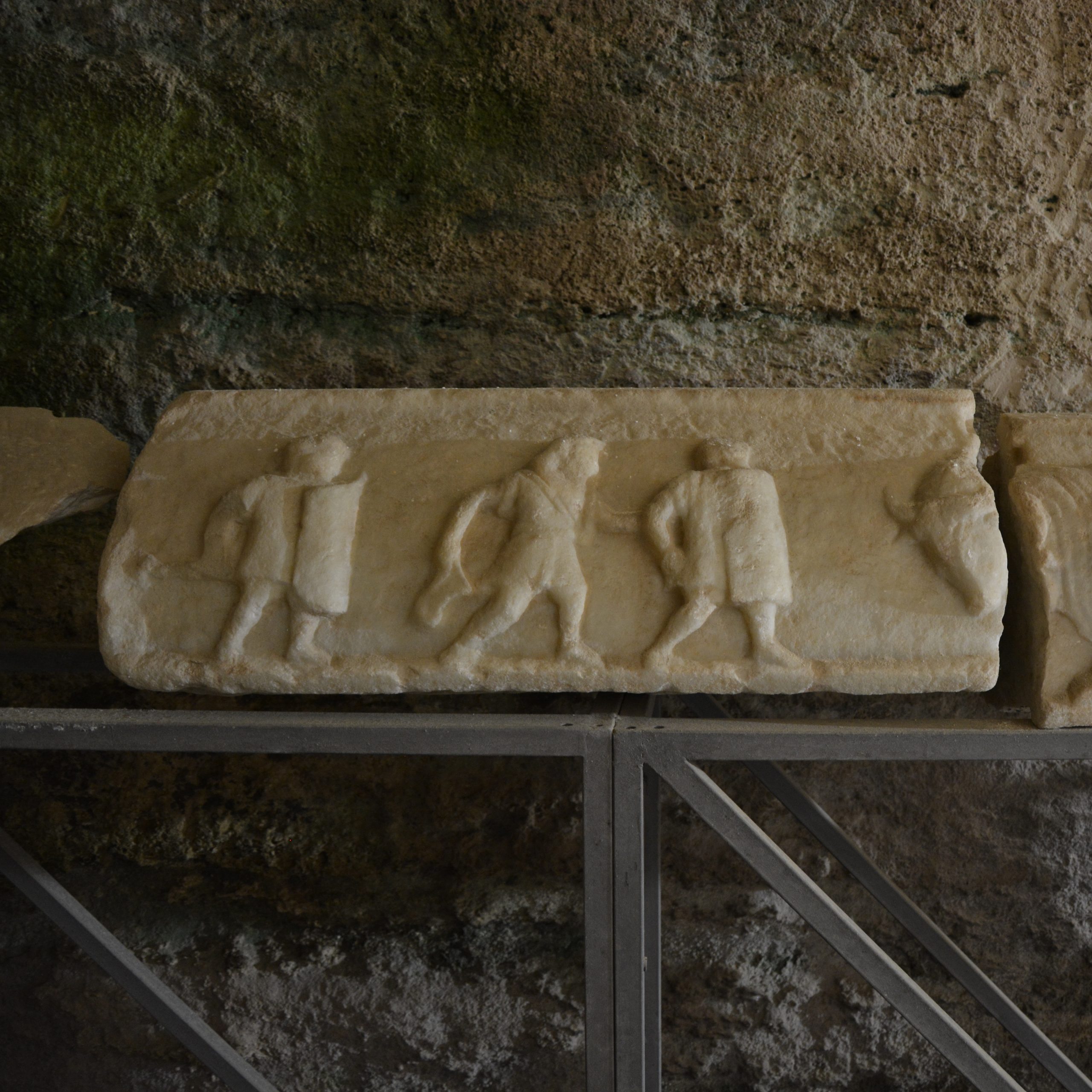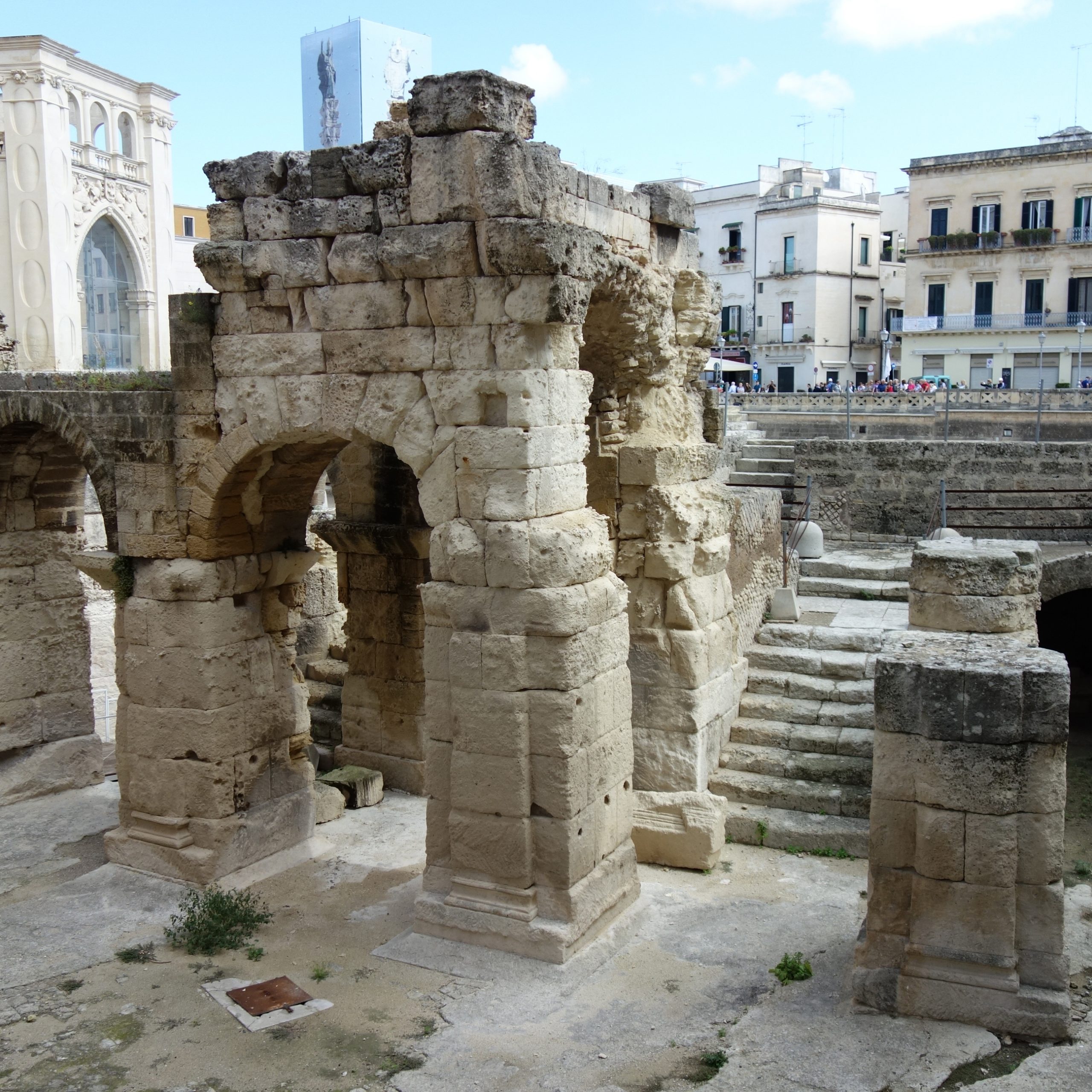Amphitheater and Roman Theater of Lecce
 Located in the heart of Lecce, in Piazza S. Oronzo, the Roman Amphitheater testifies to the importance it achieved from ancient Lupiae in the imperial era. Discovered in the early twentieth century, the original building is today visible about a third, with part of the arena and cavea, while the remaining portion is hidden below the square and the buildings facing it.
Located in the heart of Lecce, in Piazza S. Oronzo, the Roman Amphitheater testifies to the importance it achieved from ancient Lupiae in the imperial era. Discovered in the early twentieth century, the original building is today visible about a third, with part of the arena and cavea, while the remaining portion is hidden below the square and the buildings facing it.
Background
The monument, already known at the end of the 19th century thanks to sporadic extractions, was brought to light by the early twentieth century, as part of the radical redefinition of the town center layout of Lecce. The archaeological excavations, started in 1900 by the archaeologist Cosimo De Giorgi, have allowed to give back the city the currently visible portion of the Amphitheater. The dating of the building, intended for gladiator fights and hunts, is still debated today, but according to the most accredited hypothesis, the original layout dates back to the Augustan age. Subsequent restorations and improvements, such as the construction of the portico in summa cavea, would have been made in the Hadrian era. In the early Middle Ages, the remains of the Amphitheater probably formed part of the fortifications of the town and from the eleventh century the decorative elements began to be reused in the crypt of the Cathedral of Otranto. Between the end of the 15th and the beginning of the following century the visible wall structures were used as foundations of the Governor’s Island. Since 1906, the day after its rediscovery, the Amphitheater has been a “National Monument“.
Trivia
The discovery of the Roman Theater of Lecce dates back to 1928 when, during some renovations of a private residence, ancient structures and artifacts began to emerge. After the first phase of excavations and archaeological investigations, in 1938 several elements were brought to light: the orchestra, the lower part of the cavea, the pulpitum (stage) and the eastern aditus (entrance), i.e. all the main elements that make up the archaeological site. The elements excavated in the rocky surface of the Lecce stone are the main visible elements of the structure. Originally, the theater, whose construction could date back to the Augustan age, had considerable dimensions with an auditorium of a diameter of about 75 meters and capable of accommodating at least 6000 spectators. Its configuration responds to the typical canons of the best known models, with the upper part of the auditorium surmounted by a portico and connected to the majestic backstage; here, on two or three architectural orders, a large number of statues or sculptural groups were present which remain, although fragmentary, a testimony to the very high quality of the artefacts and the celebratory intent of the Augustus family and his successors.
Info and Contacts
Piazza Sant’Oronzo, Lecce
Telephone: +39 080 5285210
Director: Marina Nuovo
Email: drm-pug.anfiteatrolecce@cultura.gov.it
Contact us for more information
The fields marked with (*) in addition to the acceptance of our Privacy and Cookie Policy, are required to send the message.





